Art Colony
An art colony is a community of artists gathering for creative collaboration, knowledge exchange, and artistic development. Originating in the 19th century, art colonies remain relevant today, hosting artists from various disciplines, including painting, sculpture, film, and music. These colonies offer diverse structures, from temporary residences to permanent communal living, and can be institutional or independent. The following key points capture their historical and modern significance:
Key Highlights of Art Colonies
- Historical Importance
- Origins: Inspired by 19th-century artistic needs for Plein Air painting and a return to nature during rapid industrialization.
- Notable Movements: Influenced Impressionism, Naturalism, Post-Impressionism, and Synthetism.
- Iconic Tools: The invention of the French easel and paint tube (patented by John Goffe Rand in 1841) enabled outdoor painting.
- European Art Colonies
- Barbizon School: Near Fontainebleau Forest, it emphasized French landscapes and peasant life. Key artists: Jean-François Millet, Theodore Rousseau.
- Norwich School: Focused on scientific landscape observation. Key artists: John Crome, Joseph Stannard.
- Pont Aven School: Associated with Paul Gauguin and the development of Synthetism and the Nabis movement.
- The Hague School: Created Plein Air compositions in the Netherlands. Key artists: Paul Gabriël, Johannes Bosboom.
- Newlyn School: Based in a picturesque English fishing village, centered on Naturalism.
- American Art Colonies
- Byrdcliffe Colony: Founded in 1902, it embraced Arts and Crafts ideals and hosted multidisciplinary artists.
- Taos Art Colony: Established in 1899, it featured local and visiting artists, including Georgia O’Keeffe and Andrew Dasburg.
- East Hampton Art Colony: Gained cult status post-World War II, attracting Jackson Pollock, Mark Rothko, and Andy Warhol.
- Cultural Role
- Art colonies were retreats from industrial urbanization, allowing artists to reconnect with nature and explore new landscapes.
- Many colonies became incubators for significant artistic movements.
- Modern Relevance
- Contemporary art colonies often host artist-in-residence programs, combining traditional inspiration with modern artistic disciplines.
- They provide spaces for innovation, collaboration, and preservation of artistic heritage.
Conclusion
Art colonies have profoundly shaped the art world, from 19th-century European movements to contemporary global practices. These spaces foster innovation, collaboration, and creativity, inspiring artists across generations.
An art colony is a form of artistic association and gathering for joint work. The nature of the organization of an art colony can be diverse and differs in the duration, the number of participants, additional programs it offers, as well as in the institutional or non-institutional character it represents. This nineteenth-century concept of the artistic community is still relevant today. Artists who gather in the colonies come from various creative spheres from painting and sculpture to film, music, architecture, etc. The most famous art colonies were Barbizon School, Norwich School, Pont Aven, Newlyn School, Skagen, Hague School, The Byrdcliffe Colony, Taos Art Colony, East Hampton Art Colony.
Notable Artwork from Art Colonies
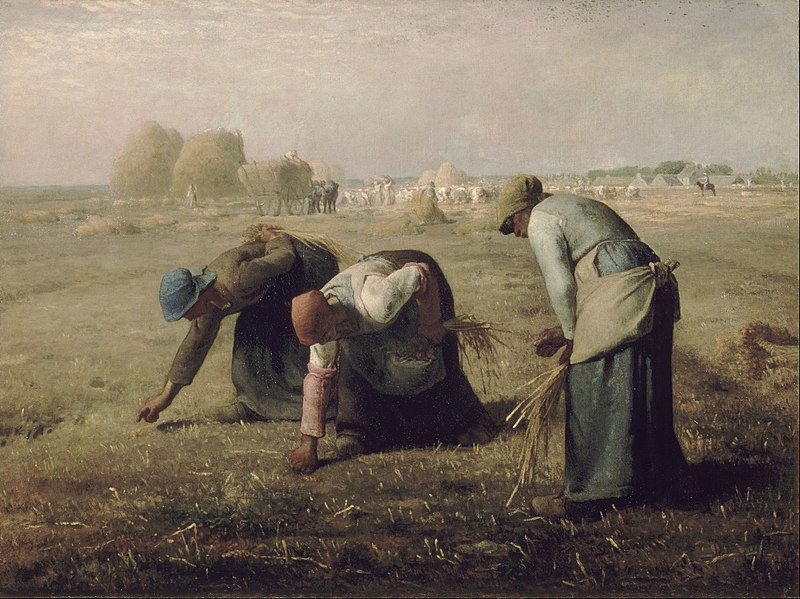
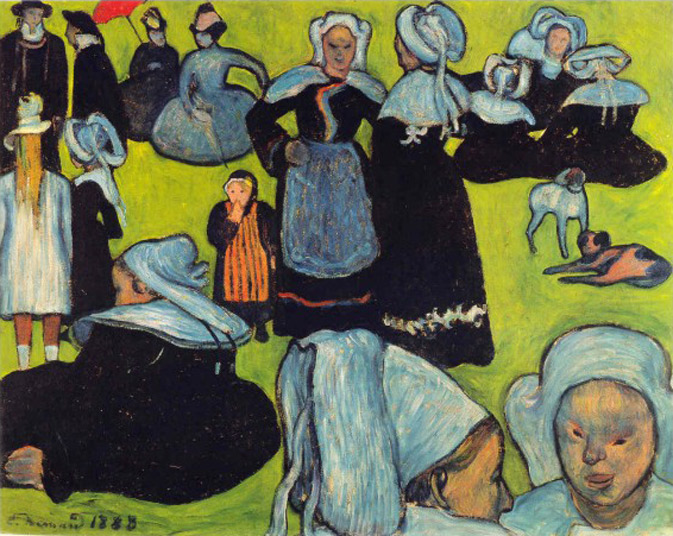
Pont Aven School, Emile Bernard, Breton Women in the Meadow, 1888, oil on canvas, 74 x 93 cm, Musée d’Orsay, Paris
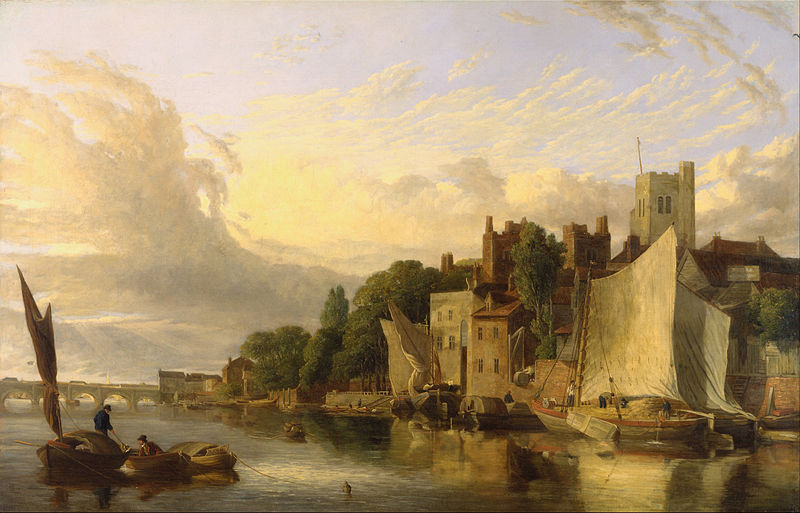
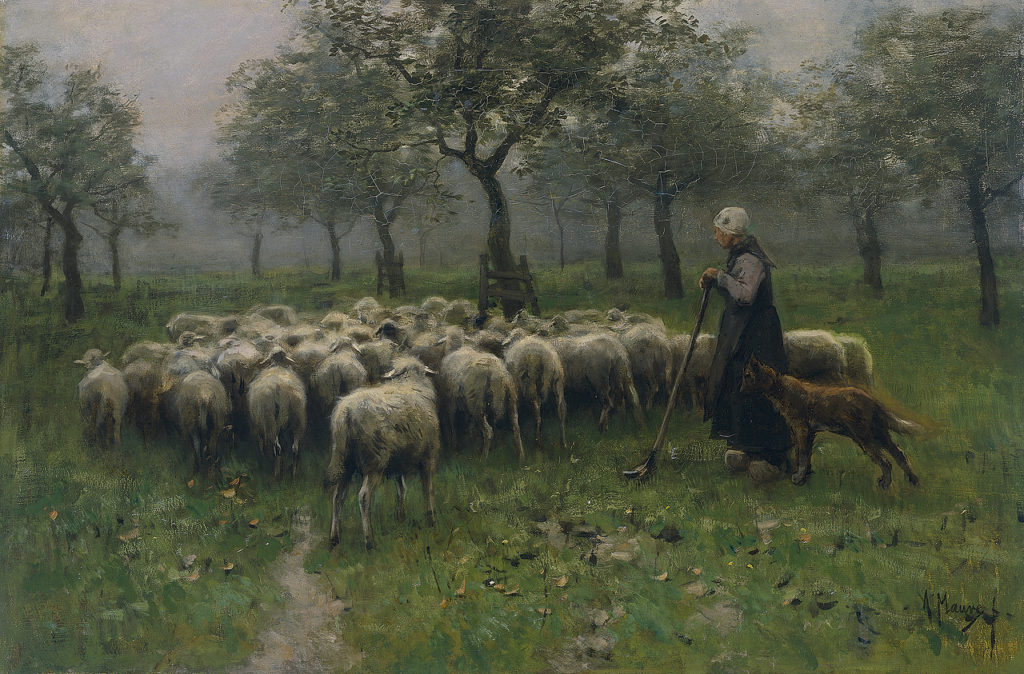
Anton Mauve, Shepherdess with a Flock of Sheep, 1870-1888, oil on canvas, 54 x 82 cm, Rijksmuseum, Amsterdam
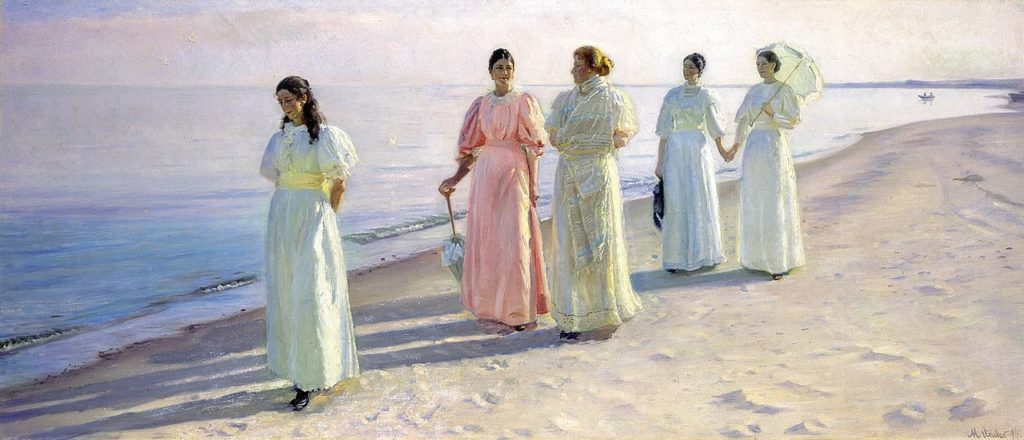
Michael Ancher, A stroll on the beach, 1896, oil on canvas, 161 x 69 cm, Skagens Museum, Skagen
Key Phenomena for the Development of Art colonies / New Landscape Painting
The transformation brought by John Constable in the understanding of landscape is an introduction to a new approach to painting. The evaluation of the authentic, recognizable, local landscape that Constable insisted on interrupted the previous understanding of the ideal landscape as a product of the artist’s imagination. The ideal landscape was no longer the one created in the studio with the aim of more harmonious forms, but the landscape that bore the hallmarks of real space. The whole artistic movement – Naturalism later developed on these ideas. The principles of credible transfer of scenes from nature to canvas, as well as Plein Air painting, were a common factor for many art groups from Impressionism, Naturalism, Post-Impressionism to Realism and Primitivism.
French Easel and the Paint Tube
This relocation of the painting process from the studio to nature was greatly facilitated by the revolutionary inventions – the French easel and the paint tube.
Time played a crucial role since the paint dried quickly and lost its freshness. John Goffe Rand in 1841 patented a color tube that would offer Plein air painters an almost inconceivable speed of painting. The new easel with its practical design allowed easy portability and perhaps most importantly it included a compartment in which color tubes, palette knives, and other equipment could be stored. Plein air method with new painting tools has enabled the painting to be completely finished outdoors in the oil technique.
Return to Nature or Search for the Ideal Landscape
Repositioning the role of the individual in relation to nature is one of the key ideas of early modern art. The accelerated processes of industrialization in Europe, which have conditioned dramatic urban, demographic and cultural changes, have encouraged many artists to search for an oasis that would be the antithesis of all this. Following this idea, the first art colonies in Europe were created.
As a unique example of space that initiated the exchange of knowledge, ideas, the space of art colonies was often the place of origin of artistic movements. Well-known European art colonies would usually be located on the coast or outside big cities. Artists would collectively inhabit these spaces for shorter or longer periods of time. Thus, over time, different colonies developed. Colonies that are organized seasonally, colonies that include months of residence, or colonies that support permanent residence. Today, there are colonies with institutional support and those that function as communes.
Art colonies also differ in the way they are accessed – there are so-called closed colonies that invite artists to cooperate on the recommendation of members and open colonies to which artists are free to apply.
European Art Colonies
The Barbizon School
The Barbizon School, on the edge of the Forest of Fontainebleau, attracted many artists who were inspired by the then increasingly famous Constable’s painting in France. Following his ideas, these painters were among the first to make the French landscape the dominant subject of their painting. The naturalistic approach was also noticeable in the often shown scenes from peasant life. This art colony will serve as a model for many European and American art colonies. Famous artists who belonged to this school are Theodore Rousseau, Charles-Francois Daubigny, Jules Dupre, and Jean-Francois Millet.
Norwich School
The key person for establishing this school and the gathering of many British landscape painters is John Crome. What especially characterizes Crome’s painting and the painting of his followers is the scientific approach to landscape observation. Prominent members of the group were John Crome, Robert Ladbrooke, Joseph Stannard, Henry Bright, James Bulwer, Henry Ninham, Arthur James Stark.
The Pont Aven School
Artists Émile Bernard, Charles Laval, Maxime Maufra, Paul Sérusier, Charles Filiger, Meijer de Haan, Armand Séguin, and Henri de Chamaillard took part in the colony. However, the most famous participant of this colony is Paul Gauguin, who came up with key ideas for the development of Synthetism here. Also, Gauguin’s acquaintance with Paul Sérusier, which took place in Pont Aven, will be crucial for the Nabis movement.
The Hague School
Painters who gathered at the Hague School art colony painted spontaneous Plein air compositions from the surrounding area of Oosterbeek and later The Hague. Significant representatives of the school are Johannes Warnardus Bilders, Barend Cornelis Koekkoek, Hubertus van Hove, Paul Gabriël, Johannes Bosboom, Sina Mesdag-van Houten, Floris Arntzenius.
Newlyn School
This art colony in the southwest of England has attracted many naturalist artists. The fishing village with a picturesque environment has opened a whole range of naturalist motifs to artists. The members of this group were Stanhope Forbes, Frederick Hall, Walter Langley, Eleanor Hughes, Henry Scott Tuke.
American Art Colonies
Artists who were part of the Barbizon School and other European art colonies transferred this concept to American culture. Interwar American modernists often organized themselves in this way, and the presence of art colonies in American culture did not decline after World War II.
The Byrdcliffe Colony
This art colony was founded in 1902 near Woodstock, New York. Inspired by the ideas of the Arts and Crafts movement, this colony has built a program that accepts artists from the field of visual arts as well as writers and composers. This Colony hosts an Artist-In-Residence program that is still attended by a large number of artists every year.
Taos Art Colony
American artists have been coming to Taos since 1899, where the Taos Society of Artists was later formed. In addition to artists who were born and settled in this city such as Juanita Suazo Dubray, Albert Lujan, and Juan Mirabal, artists who moved here or visited it frequently were Andrew Dasburg, Mabel Dodge Luhan, Nicolai Fechin, and Georgia O’Keeffe.
East Hampton Art Colony
The pioneers of the artistic gathering in East Hampton are Jackson Pollock and Lee Krasner. This colony soon gained cult status in American post-war art. Notable artists who have worked here are Willem de Kooning, Mark Rothko, Larry Rivers, Alfonso Ossorio, Robert Motherwell, Andy Warhol, Thomas Moran, Louis Schanker, etc.
